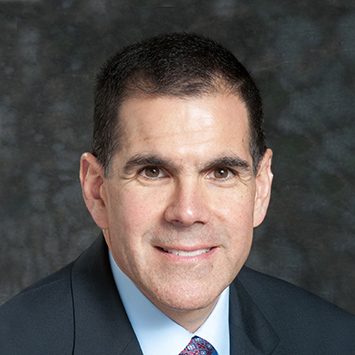What Does 2017 Hold in Store for Pharma?

What will be the most important industry drivers, its innovations, if any? What indeed!
During the ISPE 2016 Annual Meeting Pharmaceutical Engineering caught up with a few industry leaders and asked for their perspectives. Here's what they had to say.
 |
Peter Bigelow President XCell Strategic Consulting, LLC |
1. What do you believe the global industry needs to move forward in 2017?
We need to continue to provide new and innovative products at prices that are fair and reasonable. It’s important for the pharmaceutical industry to provide drugs at pricing that fits our health care models. We also need to continue to invest in the research and development of important drugs, as well as continue to innovate in all areas of the business.
2. What will be the most important industry development or innovation in 2017?
There is a need to cultivate practices and tools that allow us to develop products more efficiently and manufacture them with greater levels of consistency. There is interesting work underway to improve processes; if we can continue to innovate in that area and drive best practices throughout global manufacturing, that will be a big enabler for improvement. I’m thinking specifically of things like continuous manufacturing, lean manufacturing, Six Sigma methodology, better planning tools, and using IT solutions so we understand our processes better, making them more efficient so they require less intervention. These solutions are out there, but there’s a lot of work to be done to put them into practice.
3. What will be 2017’s greatest hurdle and how do you believe industry might overcome it?
Our biggest hurdle is with the reliability of supply and assurance that patients get the medicine they need to support the best medical outcome. This is hugely important for the industry, and we’ll continue to struggle with making our supply chains reliable. I see the solution coming from a focus on improving supply chain reliability so that we consistently deliver necessary medicines, driving for consistent and predictable delivery across the industry.
 |
Chaz Calitri VP, Global Engineering Pfizer |
1. What do you believe the global industry needs to move forward in 2017?
From the regulatory perspective, we need more harmonization. As the global supply chain has become so complex and interdependent on a global scale, there are inefficiencies that are plaguing us.
2. What will be the most important industry development or innovation in 2017?
Right now there is a race to develop biosimilars that is happening globally. There will be a few winners and a lot of losers. A lot of companies, like ours, are investing heavily biosimilars—in many cases the same products—and there’s going to be a big shakeout that will start to happen in 2017.
3. What will be 2017’s greatest hurdle and how do you believe industry might overcome it?
My response is based on the state in the US. Our greatest hurdle is reputation and society’s
unwillingness to invest in the future, namely innovative products that require significant investment. This gets to the pricing issue and the availability of generics. I think that innovative, research-based pharma companies will continue to be challenged, particularly in the markets that don’t have a favorable system, like the US. The public is naïve about what it takes to bring new medicines to market and seems unwilling to invest in innovation. It is only through innovation that we can continue to advance medicine and greatly improve people’s lives.
 |
Steve Leonard Sr VP, Global Operations Catalent Pharma Solutions |
1. What do you believe the global industry needs to move forward in 2017?
Serialization for product security: More than 70% of global volume is now covered by current or pending legislative requirements for serialization. In 2017, the US requirements begin to come into effect, and in 2018 European ones are scheduled to be implemented. In both cases, implications for manufacturing sites—both in-house and external—are substantial, requiring capital investment, validation, systems, and business process changes. This does not just affect the sites, however; in many countries integration into a complex, interoperative system of data exchange up and down the pharmaceutical supply chain is needed. Catalent has been active in these areas, and has invested to ensure it is sufficiently prepared to serve customers’ needs.
Ongoing manufacturing network realignments: Larger and mid-size manufacturers continue to face network realignment needs, driven by several key factors: First, a large number of existing (mostly small-molecule) products are approaching patent expiration; products worth about half of current branded market worldwide sales are expected to go off-patent over the next five years (per EvaluatePharma). Second, a focus shift by several large companies to biologics, plus the quantity growth of biologics in development, and increasing penetration of biosimilars—including finally in the US—is moving toward more need for both in-house and outsourced biomanufacturing. Third, the increasing prevalence of smaller demand volume products—whether orphan products for rare diseases or specialty-care products, which comprise a majority of new launches—require more flexible smaller-batch-size capacity, which is easier to change over, versus the large, long-duration capacity in place in much of today’s large company network. All of these factors are reasons for organizations to increasingly consider outsourcing as part of their network reconfiguration strategy, as a way to improve return on invested capital.
2. What will be the most important industry development or innovation in 2017?
Complex molecules that dominate the current pipelines will drive an evolution of new manufacturing techniques: There has been a great deal of momentum in the development and scale-up of new manufacturing process technologies to meet functional product needs, and to reduce the potential of deviation. In recent years substantial growth in secondary API processing has improved the bioavailability of the drug product—amorphous dispersions of API molecules, for example, using either hotmelt extrusion or spray dry dispersion—joining more established particle-size-reduction techniques and lipid-based formulation approaches. If innovators have access to multiple technologies at the early stage of development, the potential for drugs not being restricted by issues such as bioavailability is much higher.
Other manufacturing process innovations will continue to evolve: Continuous manufacturing, pushed by regulators to reduce in-process deviations, will have certain applications that make sense. As batch sizes/product volumes decrease, however, economic benefits outside of deviation reduction may be less clear. Also, additive manufacturing techniques such as 3D printing are still in their infancy within the pharmaceutical industry, with the first drug product approved just this year.
3. What will be 2017's greatest hurdle and how do you believe industry might overcome it?
First, there are the serialization challenges already discussed, which will take a coordinated effort across the whole supply chain to progress. Second—and this is not just a problem for 2017—molecules in development are becoming increasingly challenging to deliver, and somewhere between 60% to 90% of those in active development will require some type of advanced technology—synthesis/expression, molecular engineering, formulation, dose form, and/or device—to achieve maximum clinical potential. Many companies do not have all of these capabilities in-house at both development and commercial scale, and often rely on one or two preferred approaches.
It will become more important, however, that early in development companies identify partners that can bring a broad range of advanced capabilities and potential solutions, and so that they can not only develop molecules, but scale-up and deliver full commercial supply. This approach will also help avoid incremental capital investment in new commercial-scale equipment, allowing for reinvestment elsewhere. At Catalent, we believe the investments we have made position us to serve developers and manufacturers of drugs with the broadest range of dose forms and capacity available to the industry.
 |
Manfred Maeder Head Device Development & Commercialization BTDM Novartis Pharma AG |
Biologics and biosimilars offer a major opportunity for future growth across the industry. We are investing substantially to support our growth in this area to ensure we can keep pace, if not outpace the patient need. Within the shifting in the health care landscape, with a growing and aging patient population, we recognize how significant the advances in this field will need to be and we are taking steps to ensure we are prepared.
There was a huge increase in biologics approvals this year and this will continue in coming years. Companies like Novartis are continuing to invest heavily in biologics, building plants as well as developing and manufacturing new products to meet unmet needs. With that increase, one of the upcoming challenges I see will be finding enough skilled people able to fill the growing demand.
Finding enough qualified engineers to do the work of planning and building the new biologic facilities is one part of the story. I’ve heard from engineering companies that are constructing plants now that this is and will continue to be an issue. In the next 5 years, pharmaceutical companies will spend more than $20 billion to build plants capable of manufacturing and producing biologics. This increase is so huge, it’s expected that there won’t be enough engineers to build these plants across the industry. Second, once these plants are built, we may face another concern when it comes to finding qualified people to run these new sites. So with the number of sites increasing, there is also the potential to face shortages of knowledgeable and/or experienced biotech engineers able to manage the all complexities of biologics from building plants to manufacturing products.
Is it a global problem?
In my opinion, it is becoming a global problem but not one that is unsolvable. Across the industry, biotech needs are growing, which is a good sign, even though having skilled people remains an imminent concern. However, the concern is not just limited to finding the right people. As we develop new therapies, we also develop new technologies and combination products. More than 95% of the biologics in our portfolio are applied in combination with devices. This means we also need more devices; it’s very difficult to find and appropriate enough skill first to develop and then commercialize both.
The solution?
Well, we have a couple of options. First, we can try to find people from the medical device industry, but they are facing similar shortages and difficulties finding the right talent. Compounding the issue, of course, are the industry-wide tightening of regulations and increasing expectations and documentation requirements. This means that overcoming the competition for similar types of skillset is part of the solution, as is tapping into other resources like those beyond the industry, which leads me to option two.
Option two revolves around training and building upon the talent available both internally and externally. We can achieve this by investing in and training people who have basic or similar knowledge. The time investment, of course, is higher but the outcome may be worth it Say, for example, we are looking for someone able to perform risk management through human factor studies. While this requires an incredible depth of knowledge—almost a specialized skillset—perhaps with training and a time investment we may develop the right candidates rather than find them.
Opportunities for migration?
Yes, for sure. Short-term solutions can be based in migration. For example, one can be found when we look at shop floor knowledge. This is an area where a significant number of people can be cross-trained to perform successfully within the biotech space.
 |
Guy A. S. Wingate, PhD VP & Compliance Officer, Global Manufacturing & Supply GlaxoSmithKline |
Looking ahead the main challenges I see facing the pharmaceutical industry are (in no particular order):
- Data integrity issues—technical challenges as well as operational issues driven by behaviors
- Implementing end-to-end integrated supply chain business process solutions to achieve more efficient operations
- Accelerated R&D development with increased outsourcing
- Removing waste and defects to reduce cost of goods in manufacturing facilities
- GMP standards at third-party contract manufacturers and suppliers
ISPE has a key role to play in bringing together regulators, suppliers, and pharmaceutical companies to develop practical standards and working practices that help firms improve performance while ensuring compliance. As professional engineers, we should apply good judgement and risk-based approaches to assure we put in place efficient and effective facilities, systems, and processes. Our organizations need to be brilliant at the basics as well as leverage technology and innovation. From my perspective, we need to spend more time understanding the impact of culture, values, and human factors on sustainable performance. I know ISPE guidance will tackle these challenges (e.g., new ISPE guidance on records and data integrity scheduled for publication early in 2017). We must always remember there are people at the end of the supply chain, and it is important they receive a reliable supply of products that are safe, effective, and meet regulatory requirements.
 |
Fran Zipp President and CEO Lachman Consultant Services, Inc. |
As 2017 dawns, the pharmaceutical industry will continue to face pressures from all areas. Companies will face external pricing pressures and competition from lower-cost producers, in lower-cost areas. Companies will need to be able to cut costs while maintaining product and process quality and meeting all compliance requirements. This is a continuum and a story we see every year. It’s not a onetime-only effort to reduce costs. We need to innovate to survive. I think continuous manufacturing is a way to achieve that, and the industry needs to figure out a way to make it happen in a big way. New products need to be developed with the goal of making them in a continuous process, and older products need to be reimagined. The benefits are worth the effort.
Implementation across the industry requires a commitment not only from the R&D departments of firms, but also from manufacturing, quality operations, regulatory affairs and supply chain. Companies can apply continuous manufacturing across the spectrum, from high-volume to low-volume products, from high profit margin to low profit margin. Continuous manufacturing will not only save costs, it can transform product and process quality as well, while focusing on predictive compliance. Implementation of continuous manufacturing results in elimination of down time, reduced operator error, and avails enhanced controls; these can be transformational to quality and demonstrate industry’s commitment to sustainable compliance.


